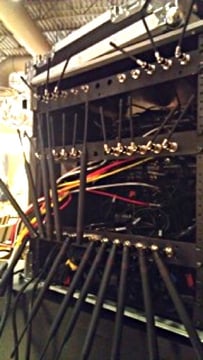- Products
- All Products
- RF PA Extension Kit
- Wireless Microphone Upgrade Packs
- In-Ear Monitor Upgrade Packs
- Wireless Microphone Antennas
- Wireless In-Ear Monitor Antennas
- Antenna Distribution for Microphones
- Antenna Combiners for In-Ear Monitors
- Multi-Zone Antenna Combiners
- Spectrum Tools
- Accessories, Cables and Parts
- Solutions by Venue
- Resources & Training
- Performance Tools
- About Us
Avoid Wireless Mic Dropouts
Wireless Microphone Essentials
Reliable, Pro Performance, Aesthetically Pleasing, Flexible Solutions for all venues from clubs and churches to large stadiums, cathedrals and executive boardrooms.
Wireless Mic Accessories for Every Application
RF Venue Packages provide all the components needed to create a fully functional antenna system for your wireless microphone receivers.
Key Features & Benefits
See what set RF Venue apart from the competition.
“The RF Venue training did an excellent job of presenting the products and, more importantly, demonstrating WHY their products are important to use. After the training, I am certain that I will be recommending and using RF Venue in more, if not most, applications. Undoubtedly, they are the correct tool for the job.”
Brian Grant, Washington Professional Services
“The very knowledgeable team at RF Venue are extremely dedicated to providing quick technical support. It's rare to find manufacturers that are this dedicated to backing up their customers and providing training whenever requested. ”
Colin Quek, Loud Technologies Asia
“Very thorough training with detailed information verbally and visually/graphically. Great use of demonstration as well. ”
Garry Brents, ProAudio.com
Solutions by Venue
RF Venue makes products to increase reliability for any venue.
Start with RF Venue Performance Tools
Check your performance or build your system with our free tools.
More From The Blog

CP Beam Antenna
Are You a Wireless Microphone Antenna Farmer?
1 min read
| October 13, 2012
Read More

2.4 GHz CP Beam
2.4 GHz Microphones Gaining Speed on Corporate Gigs
5 min read
| December 13, 2014
Read More

RF Spotlight Antenna
Corporate Wireless Audio: Q&A with Jeffrey Miranda
4 min read
| October 11, 2014
Read More
Work with RF Venue
RF Venue users already work with all the gear that you use. You should work with us too.




